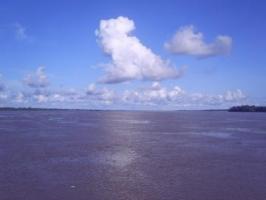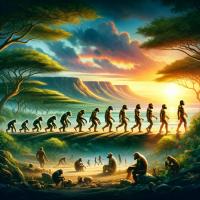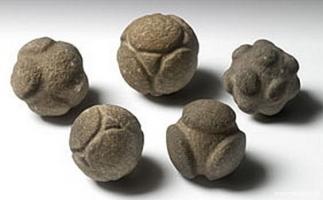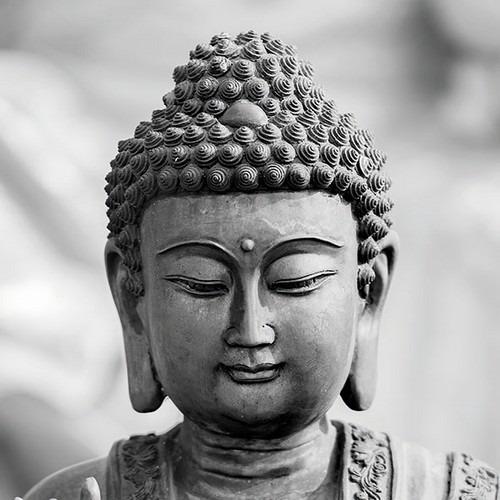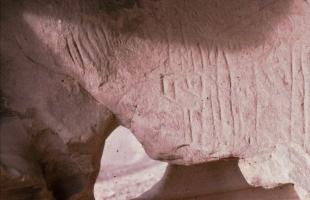Origin of the name America

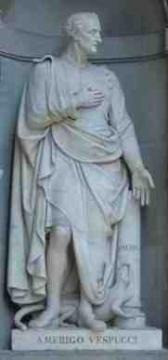
After the voyages of Christopher Columbus, the debate on the distribution of the discovered lands was gaining momentum in Europe.
The Portuguese, dissatisfied with the previous treaties, pressured the government of Castile to take possession of more lands. In fact, in 1493, upon returning from Columbus's first voyage, the Spanish Pope Alexander VI had decreed in the bull Inter Cetera, that all lands located west of a meridian distant one hundred leagues (about four hundred and twenty kilometers) from Cape Verde They should belong to Spain, while those that were discovered and conquered to the east of that line, and that were not subjected to Christian rule, should belong to Portugal.
It was up to King John II of Portugal to carry out new negotiations with the Catholic kings of Castile to move the area of Portuguese influence further to the west and maintaining that the new meridian extended to the entire world, thus limiting Spanish control in Asia.
The new treaty signed in Tordesillas on June 7, 1494, thus divided the world again between the two European powers along the north-south meridian, three hundred and seventy leagues (one thousand seven hundred and seventy kilometers) to the west of the islands of Cape Verde, corresponding to the forty-six degree meridian. The lands located to the east of this line belonged to Portugal and those located to the west, to Spain. This treaty was contrary to the bull of Alexander VI but was approved by Pope Julius II with a new bull in 1506.
Just in the years in which the treaty of Tordesillas was approved, an Italian, the Florentine Amerigo Vespucci, lived in Seville.
This Italian was born in Florence in 1454, and was one of the few who traveled simply out of the desire to know, and an innate geographical curiosity. At less than thirty years old he entered the service of the Medici family, as an asset manager and adept at commercial relations. In 1491 he was sent to Seville to take care of all the business that the Medici had in southern Spain.
In Seville he found a quite stimulating and interesting environment, and although his profession led him to deal with commerce, stamps, merchandise and contracts, his real interest was in travel to those lands that were beyond the ocean, and in getting to know the people. that perhaps he inhabited them. He had read a lot, especially Marco Polo, who, in his review of his travels, had described Asia, Cathay and Cipango very well. He had a deep interest, both in the culture of other peoples who lived in Asia, and in nature, with the observation of animals and plants.
During the first months of his stay in Seville he met Christopher Columbus. Although from the beginning it became evident that both had different points of view regarding maritime exploration, they had in common their reading of Marco Polo and their fascination with his journey to Asia.
Vespucci was impressed by the incredible variety of peoples, traditions and customs described by the Venetian merchant, while Columbus was obsessed with the idea of sailing west to be able to easily reach those lands and appropriate their gold riches. They both talked a lot about the subject but Vespucci was not easily convinced, something told him that the trip to the west was too long. Marco Polo's review and the calculations of Tolomeo and Alfagrano led him to think that the earth was not so small. Columbus, on the other hand, imagined the Earth smaller than it actually is and according to his calculations, if he sailed west he would reach Asia in thirty days.
When Columbus returned from his second voyage, the kings of Castile began to realize that the newly discovered islands extended over a huge portion of ocean. They were therefore convinced that if they wanted to extend their dominions and prevent the Portuguese fleets from invading the areas of their influence, they would have to give other explorers the possibility of traveling to the new discovered lands, either to acquire new information for a possible route to Cathay and Cipango or to search for more gold and other possible riches. It was probably King Ferdinand II of Aragon himself who wanted to organize a trip in order to verify the real existence of dry land, plot it on a map and thus obtain precious information that would be useful for future undertakings. Some evidence suggests that Amerigo Vespucci took part in this expedition, and that he first traveled beyond the Atlantic in May 1497. Some historians maintain that Vespucci's first voyage was in 1499 together with Ojeda and the cartographer Juan de la Cosa, while others maintain that he was the first European to set foot on the South American mainland on June 24, 1497. And this conviction is based above all on the reading of the account of his four voyages, called Letter of Amerigo Vespucci on the newly found islands. in four of his trips, addressed to Piero Soderini in 1504. In this letter Vespucci describes the first departure from the Port of Cádiz on May 20, 1497:
In the year of our Lord 1497, on May 20, we left the Port of Cádiz. The first land we touched were the islands formerly called Afortunadas, currently Gran Canarias. We stayed on those islands for eight days and supplied ourselves with firewood, water and provisions. Then we began to travel westward, on a journey so complete that in twenty-seven days we arrived at a land that we believed to be a continent, more or less a thousand leagues distant from the Canary Islands. What was actually true is that we were seventy-five degrees west of the Gran Canary Islands and that the northern town rose sixteen degrees above the horizon of those lands.
Who was the commander of this expedition?
Perhaps it was Yanez Pinzón or perhaps the intrepid Sevillian captain Juan Días de Solís, an expert in ocean navigation, who years later would be the victim of a fierce indigenous attack on the coast of the Río de la Plata.
Vespucci, in any case, notes in his letter that he made landfall, sixteen degrees above the equator and seventy-five degrees west of the Canary Islands.
The place of disembarkation of his first voyage has been a matter of debate in recent years. Some maintain that on the mysterious trip Vespucci made landfall in Honduras, others, however, after having delved deeper into The Letter, maintain that he made landfall on the Guajira peninsula, in current Colombian territory. From the place where they arrived on June 24, 1497, located seventy-five degrees west of the Canary Islands and ten degrees above the equator, the expedition had to head north until reaching Cabo de la Vela. And here Vespucci narrates in great detail the uses and customs of the local indigenous people, such as the use of hammocks, until now unknown to Europeans. These relationships lead us to think about the indigenous Wayúu ethnic group (Arawak language). He also describes in a curious passage, the sexual customs and physical characteristics of indigenous women:
The indigenous people of the place are not very jealous, but lustful to the extreme, especially the women, whose arts to satisfy their insatiable levity I better keep silent so as not to offend modesty. They have a wonderful, elegant, well-proportioned body. It is very rare to see wrinkles on a woman's breast, even after childbirth, neither on the belly nor on the fleshy parts of her. They are all preserved as if they had not given birth.
Another indication of Vespucci's participation in this voyage of exploration is the description made of the entrance to a lagoon where there was a people who lived in huts built over the water as in Venice.
And continuing from there, always along the coast, with several and diverse navigation routes and dealing throughout this time with many and different peoples of those lands, after a few days we arrived at a certain port in which God wanted to free us from great dangers. . We entered a bay and discovered a village that looked like a city, placed on the waters like Venice, in which there were twenty large houses, not very distant from each other, built and supported on thick sticks. In front of the entrance to these houses there were drawbridges, through which one passed from one to another, as if they were all united.
The immense territory that was inside this lagoon was called “Venice”, a name that later became “Venezuela”.
Then the fleet, according to the Florentine's story, sailed eastward, arriving in August 1498 at Coquibacoa and the Gulf of Paria, located in front of an island that Columbus on his third voyage would baptize Trinidad. Vespucci continues the story, telling how the ships headed towards the open sea again, passing through numerous islands in the Antilles.
There are numerous interpretations regarding the itinerary followed for the return trip. It is likely that the navigators coasted the lands of Central America, and entered the Ocean Sea passing between the island of Cuba and the Florida peninsula.
Vespucci describes an island called Iti which does not correspond to Haiti at all.
It is worth highlighting the world map that the cartographer and navigator Juan de la Cosa designed in 1500, upon his return from a subsequent trip that he made with Alonso de Ojeda, in which Vespucci also participated.
The Central American coasts are drawn on the map with great precision, the island of Cuba is designed as it is in reality, that is, detached from the continent because until that moment, it had been considered part of Cathay and therefore united to the supposed continent. Asian.
Since on the next voyage in 1499 there is no sign of a route between Cuba and Florida, nor is there one on Columbus's first three voyages, it is feasible that someone had taken this route previously, right on the voyage in 1497.
Everything The above suggests that Juan de la Cosa participated in the 1497 expedition, he made the maps of the Central American coasts, he identified Cuba, which he had already known while traveling on Columbus's first two expeditions, he sailed between it and Florida, realizing that it was an island territory, and represented it exactly as it corresponded to reality: an island.
Another detail that makes one think about the veracity of the trip is Iti, a small island that appears on Juan de la Cosa's world map, and that is perhaps one of the current Bahamas.
According to The Letter of Vespucci and the world map of Juan de la Cosa, it is clear that the Florentine was the first European to know and describe the South American continent in June 1497. The fleet returned to Cádiz on October 15, 1498.
Upon the return of On his first trip, Vespucci met Alonso de Ojeda, a captain of great experience, who was part of Columbus's second expedition in 1493.
Ojeda remained in Hispaniola until 1496, he participated in the battle of Vega Real, in which a squadron of Four hundred Spaniards triumphed over an army of ten thousand indigenous people. This was really the first battle between the Spanish and the indigenous people. The Spanish had harquebuses, a weapon prior to the rifle that could cause death from afar, and they traveled on horseback, sowing panic among the indigenous people who believed they were facing demigods.
In those years, due to the rumors that had spread after Vespucci's first trip, Ojeda was convinced of the existence of the mainland, and he thought that the gold wealth that was so much touted was found on the continent and not on the islands. He then considered the idea of returning to Spain to organize an expedition from there to explore the coasts of the mainland and eventually also its interior.
When De Ojeda returned to Seville he met again with Juan de la Cosa whom he had already met on his second voyage with Columbus and as he needed an expert pilot for the operation, he proposed to participate in this company in which Vespucci was also involved. The three met in the first months of 1499 and decided to leave in the first days of May.
There were three ships in total, one commanded by Ojeda and piloted by Juan de la Cosa, and two other Florentine vessels commanded by Amerigo Vespucci.
They set sail from the port of Santa Catalina in Cádiz, on May 18, 1499. After stopping at the Canary Islands, they continued in a south-southeast direction, not towards the Antilles, but further south, always towards the mainland.
Ojeda was convinced that the fabulous kingdom of Cathay was much further south than Columbus thought and he believed that he would manage to find it before the Genoese Admiral did. In his conversations, loaded with an excessive desire for power and blind greed, he expressed his intention to take over without any difficulty those Asian kingdoms in which Columbus had failed.
Juan de la Cosa and Amerigo Vespucci listened to him perplexed, since their vision of the world, more modern and knowledgeable about geography, made them aware of the real difficulties of arriving in the Indies.
After twenty-four days at sea, they sighted land and arrived on the coast of Guiana, near the Damerara River. They then headed north, towards the Gulf of Paria, where they landed to visit some indigenous villages. Here Vespucci realized who Ojeda really was: the Spaniard wanted to take over all the pieces of gold and wealth that the indigenous people possessed at the cost of anything, including using force to achieve his goal. Neither the Cantabrian nor the Florentine sympathized with this shameless and greedy behavior, and they let him know so.
It is possible that the Florentine and the Cantabrian spoke about geography and exchanged real views and information about the true nature of that unknown mainland.
At this point, Vespucci decided to abandon Ojeda's ship and continue on his own with the exploration of the coasts located to the southeast. There are many interpretations regarding this decision. Some speak of disagreements with Alonso de Ojeda, while others maintain that Vespucci, precisely because he already knew the coast to the west of the Gulf of Paria that he had visited on his first trip, decided to explore the coasts to the east, which were unknown to him. On his journey to the southeast, along the coast of present-day Guyana and Brazil, Vespucci was the first European to identify the estuary of the Amazon River. He was impressed by its brown color, which can be perceived as you enter the open sea for dozens of kilometers.
In this passage from the “Letters from Him” the Florentine describes the discovery of great rivers that could be the Amazon and the Parà:
I believe that these two rivers are the cause of fresh water in the sea. We agreed to enter one of these rivers and navigate through it until we found the opportunity to visit those lands and towns; Having prepared our boats with their provisions and twenty well-armed men, we entered the river and rowed for two days, overcoming the current for around eighteen leagues, sighting many lands. Navigating the river like this, we saw very certain signs that the interior of these was inhabited. Therefore we decided to return to our caravels that we had left in a not very safe place and so we did.
Then they continued south, towards Cape San Agustín. During this journey, Vespucci observed four stars later called the “Southern Cross”, and realized that they indicated exactly that direction, the south.
In one of his letters to Lorenzo by Pier Francesco de Medici, Vespucci brings the famous purgatory verses of Dante Alighieri, which describe the four stars, initially known to the ancient Greeks, but considered part of the constellation of the Centaur:
I turned right and headed to the other pole, and saw four stars only seen before by the first men. The sky seemed to enjoy its brilliance: Oh poor widowed northern place, deprived of looking at them.
The Florentine also left us a colorful and poetic description of the fauna he found in the South American lands:
What I saw were… so many macaw parrots and so many different species, it was wonderful; some green, others a splendid lemon yellow, and others black but very fleshy; and the singing of the other birds in the trees was so soft and melodic that we often stopped to listen to that sweetness. The trees I saw were of such beauty that we thought we were in paradise on earth…
Vespucci then returned north, recognizing the mouth of the Orinoco, stopping at Trinidad, and finally arriving at Hispaniola.
Alonso de Ojeda and Juan de la Cosa had toured the northern coast of present-day Venezuela, passing through the mouth of the Orinoco, the Gulf of Paria, the island of Trinidad and the island of the Giants, so called because they had observed there indigenous people of great height. Perhaps it corresponds to today's Curaçao. Both then headed to Cabo de la Vela, then continuing towards Hispaniola.
Arriving on this island with little gold and some rebellious and dangerous slaves, the island's colonists, who were all followers of Columbus, welcomed them with hostility for having traveled without the Genoese's approval. The return trip was made in June 1500.
As soon as he returned to Europe, Amerigo Vespucci asked the kings of Spain to give him more ships to carry out other explorations further south of the lands already known, but these were not assigned to him due to because according to the Treaty of Tordesillas, that area was under Portuguese jurisdiction. Furthermore, the kings had already assigned the ships to Ojeda, since with him they had more hope of finding gold and riches.
The Florentine then headed to Portugal. King Manuel I allowed him to participate in Gonzalo Coelho's expedition. The Portuguese fleet left Lisbon on May 13, 1501, arriving at the African coast of Bezebeghe, present-day Senegal, where it contacted the ships that were returning from India under the command of Pedro Alvarez Cabral, along the route that three years earlier he had discovered Vasco de Gama.
In Bezebeghe the crew members of the two expeditions came into contact and Vespucci had the opportunity to meet the Polish Jew Gaspar de Gama. The Jew was an attentive observer of the traditions and customs that he had known in Asia. De Gama described extensively to the Florentine the known towns in India, their geography and customs, and spoke to him about the city of Calicut in particular. In addition, he gave Vespucci important data about the biology and nature of the Indian lands.
Listening to the Jew, Vespucci thought that the lands west of the Ocean Sea had nothing to do with India, but he was not fully convinced.
Then, the Portuguese fleet returned to sea heading west and after seventy-four days at sea, it sighted the coasts of what is now Brazil, after enduring strong storms that delayed the expedition a bit. The fleet touched the capes of Santa María, San Jorge, Santa Cruz, the San Francisco River and the Bay of All Saints. Later the ships arrived at a wonderful bay, which they called “Rio de Janeiro”, since the calendar indicated January 1, 1502.
At this point, they decided to continue the exploration towards the south, knowing that these were lands that were under Spanish influence; In March 1502 they arrived at the estuary of a great river, the current Río de la Plata, which was called the Jordan River; Then in April 1502, the fleet stopped at the estuary of a river located at the 52nd southern parallel, which Vespucci called the Cananor River.
Below is a passage from a letter by Vespucci in which he describes those days:
We sailed until we found that the South Pole was rising fifty-two degrees, so that we could no longer see the Big Dipper or the Little Dipper. On April 3 there was a storm so strong that we had to lower the sails, the wind was from the east with huge waves and stormy air. It was so strong that the entire crew was greatly afraid. The nights were long, the night of April 7 was 15 hours because the sun was at the end of Aries, and in this region there was winter. In the midst of the storm, on April 7, we sighted a new land, which we traveled for about twenty leagues, finding wild coasts, no port, and no people, I think, because the cold was so intense that no one in the fleet could stand it. Seeing ourselves in such danger and such a storm, that one ship could barely be seen from the other, the waves were so high, that we agreed to make signals to gather the troops and return to Portugal. And it was a very wise decision, because if we had delayed that night, we would surely have all been lost.
Vespucci had almost reached the mouth of the famous strait that Ferdinand Magellan crossed eighteen years later. His letters were precious sources of information for the successive expeditions of Juan Días de Solís and Magellan.
The story goes that Magellan told his crew at a time when she was afraid to move forward:
Amerigo Vespucci has reached this point, our destiny is to go further!
The fleet then diverted north again to return to Portugal.
On a moonlit night, when the ships were anchored off the coast of what is now Brazil, Amerigo Vespucci had a strange sensation: he had the conviction that these lands were not islands, but rather a huge mainland that had nothing to do with Asia. It was a new world, and new were the animals, the vegetation, the indigenous people, whose practices and customs had nothing in common with what had been seen until now in the known world. Also during this trip Vespucci located two stars on the map, Alpha and Beta Centauri, which are the closest stars to our sun.
Upon his return to Europe in 1502, Vespucci was almost ignored. The Portuguese were disillusioned with the Florentine because they saw a controversy opening up with the Spanish over the possession of the discovered lands. The Spanish viewed him badly because he had traveled on Portuguese ships, and also because until then, no one had found gold in large quantities, and not even a voyage to Cathay or the Indies. Both crowns were dissatisfied because in recent expeditions the loot had been quite scarce. No one seemed to appreciate the extraordinary importance of Vespucci's geographical, anthropological and naturalistic observations.
From Lisbon, Vespucci sent a letter to Lorenzo de Pier Francisco de Medici, cousin of Lorenzo the Magnificent, in which he described his third voyage. The Latin translation of this letter was called “Mundus Novus”. Its publication in Augusta in 1504 was so successful that eleven editions were made.
In 1503 Vespucci left for his fourth voyage on another expedition organized by King Manuel I of Portugal. It had six naves, two of which were equipped by the Florentines. The trip was not so lucky, as the flagship was shipwrecked. The fleet arrived on the coast of Brazil after having discovered an island in the middle of the ocean that was named Fernando de Noronha, in honor of one of the crew members. On the coasts of Brazil there were no new discoveries, nor the founding of new villages; The fleet returned to Lisbon on June 9, 1504. Vespucci then wrote a new letter called “Letter from Amerigo Vespucci on the islands newly found in four of his voyages”, and addressed it to the political figure Piero Soderini. In this letter Vespucci makes a very complete description of the four trips he made.
Below is a passage from the letter “Mundus Novus” where Vespucci, acknowledging having described a new continent, writes:
I arrived at the land of the Antipodes, and I recognized that I was facing a quarter of the Earth. I discovered the continent inhabited by a multitude of peoples and animals, more than our Europe, Asia or Africa itself.
Later, in the 18th century, three other unpublished letters from Vespucci were found: the first describes the 1499-1500 voyage with Alonso de Ojeda, the second was sent from Cape Verde, when the Coelho expedition had contact with the ships. de Cabral and the third was written from Lisbon upon completing said trip.
The German cosmographer Martin Waldseemuller was the first to divulge the news of Vespucci in his “Cosmographie Introductio”, published in Lorraine in 1507.
After the publication of this work, the new discovered lands began to be called “Americus, or “America”, in honor of observations made by Vespucci.
At first people spoke of America only to refer to the territories south of the isthmus of Panama, but over time this term was also used for those territories located north of the isthmus.
In 1508, Amerigo Vespucci was named “Major Pilot of Castile” by King Ferdinand of Aragon. This title recognized Vespucci as the most expert navigator in the Kingdom of Spain and therefore he was assigned the task of selecting and instructing future pilots and cartographers, teaching them the use of the astrolabe and knowledge of the winds.
He died in Seville in 1512 without leaving any descendants; his property was inherited by his wife, the Andalusian Maria Cerezo.
YURI LEVERATTO









